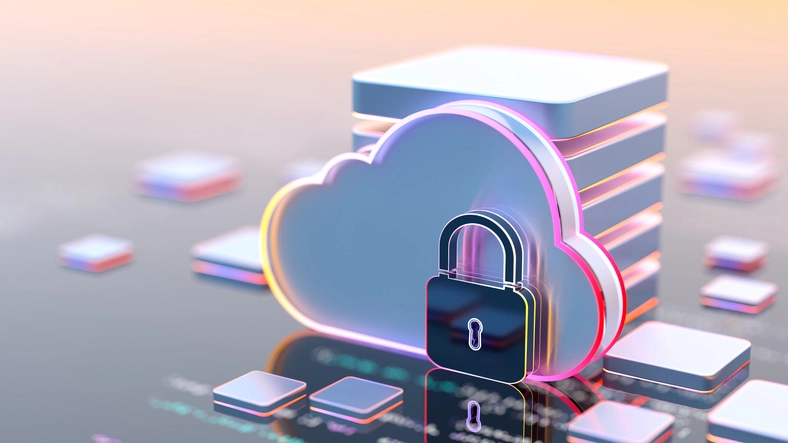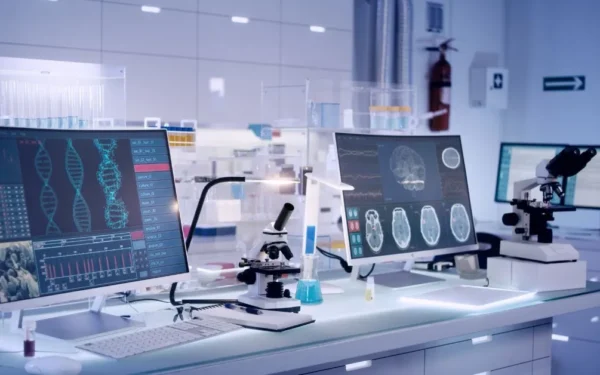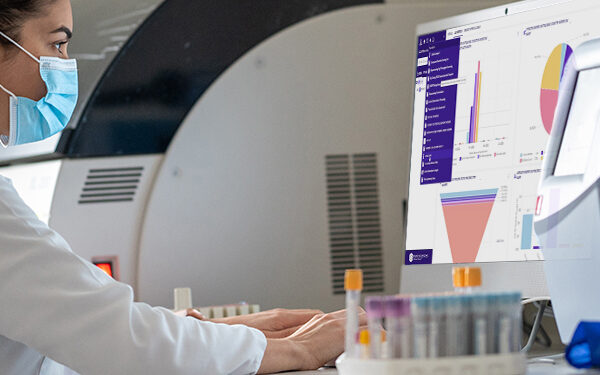Data security is a major challenge in modern laboratories. From patient health records to research findings, labs handle sensitive information on a daily basis. As a result, any kind of unauthorized access, data breach or cyber-attacks can lead to significant problems that affect the operational, financial and legal aspects of the organization.
A Laboratory Information Management System (LIMS) can help strengthen a laboratory’s data security initiatives. In the right LIMS solution, the LIMS lab data management functionality will include advanced security features such as data encryption, user authentication and access controls to protect sensitive data. Also, the LIMS should provide regular backups, audit trails and compliance with regulatory standards, making it easier for labs to maintain the integrity and confidentiality of their data.
- Understanding LIMS security
- Why is LIMS security critical for your laboratory?
- How does a LIMS ensure security?
- Determining whether the LIMS has the required level of security
Use the links above to skip ahead to the section you’re most interested in.
Understanding LIMS security
Beyond the features, integration capabilities and cost, security is an important feature to consider when purchasing a LIMS system for your laboratory. This covers the protocols and measures implemented to protect sensitive data, operations and user interactions within a LIMS.
The most crucial security features of a LIMS typically include role-based access control, where users are granted permissions based on their roles; encryption techniques employed to safeguard data both at rest and in transit; and comprehensive audit trails that record all user activities and data modifications. Regular security updates are also essential for protecting the system from emerging threats.
Why is LIMS security critical for your laboratory?
Laboratories handle vast amounts of sensitive information daily, making strong security measures essential to prevent data breaches, unauthorized access and data corruption. An efficient LIMS system ensures that the data generated and stored in your laboratory is reliable, accurate and accessible only to authorized personnel.
Protecting sensitive data
Laboratories handle highly sensitive and confidential information, such as patient data, research findings and proprietary methods. A LIMS employs security measures, such as encryption and access controls, to protect this data from unauthorized access and potential misuse. By securing sensitive information, laboratories can maintain client trust and uphold ethical standards.
Preventing data breaches
Data breaches can lead to severe consequences, including financial loss, reputational damage and legal troubles. LIMS systems, through various security protocols such as firewalls, intrusion detection systems and regular security audits, help prevent cyber-attacks and unauthorized intrusions.
Compliance with regulations
Laboratories must comply with various regulatory requirements, such as GDPR, HIPAA and CLIA, in their data management practices. LIMS systems adhere to these data protection and privacy standards and help avoid legal penalties.
Ensuring data integrity
LIMS security measures, such as user authentication, version control and audit logs, ensure the accuracy and reliability of laboratory data. This means that the data remains unaltered and traceable throughout its lifecycle, leading to valid research outcomes that can be used to make informed clinical decisions.
How does a LIMS ensure security?
A LIMS ensures security through a comprehensive set of measures, including advanced technologies and protocols to prevent unauthorized access, data loss and corruption.
Data encryption
A LIMS system encrypts sensitive data and transforms it into a coded format that can only be deciphered by authorized personnel with the correct decryption key. By using symmetric and asymmetric encryption algorithms, data can be secured in diverse ways for extra protection. This ensures that confidential information, whether stored within the system or transmitted over networks, remains secure from interception and breaches.
Data backup and recovery
A LIMS regularly creates copies of all essential data and stores them securely, either on-site or off-site. In the event of hardware failure, accidental deletion or a cyber-attack, data can be restored from the backups with minimal disruption to laboratory operations. With cloud-based LIMS systems, the data can be regularly backed up and held on external cloud servers, which can easily be accessed and restored in the event of system failure or data corruption.
Authentication and authorization
A LIMS employs authentication mechanisms including passwords, biometric scans or multi-factor authentication (MFA) to ensure that only authorized personnel can access or modify sensitive information. The system also uses role-based access control to determine what actions and data each user can access based on their role and permissions, which helps reduce the risk of internal threats.
User access control
A LIMS manages user permissions by giving each user a unique username and a strong password. Therefore, individuals can only access data and perform actions relevant to their roles, which minimizes the risk of unauthorized access and enhances overall security. Access can be given to certain areas depending on the user’s role and can be customized across different projects. This protects sensitive data for different stages of laboratory processes and adheres to regulatory compliance.
Audit trails and logging
A LIMS records all user activities, including data entry, modifications and access attempts. By logging these activities, labs can quickly review the usage history to identify suspicious behavior, ensure compliance and facilitate investigations in case of security incidents.
Regular system updates
The LIMS software solution and its components are regularly updated with security patches to address vulnerabilities, fix bugs and enhance functionality. Staying current with updates also protects the system against emerging threats and exploits, ensuring that the LIMS remains secure and reliable.
Employee training
Offering regular training to laboratory personnel on LIMS security practices and policies, ways to recognize potential threats, and the correct procedures for handling sensitive data helps foster a culture of security awareness and ensures that staff are well-equipped to contribute to data protection efforts.
Determining whether the LIMS has the required level of security
Deciding whether or not a LIMS is the right option for you depends on several factors. However, before you begin the analysis, you should know your priorities and what data security means to you. After all, the level of security your laboratory needs will depend on the type of data you’re storing, the number of personnel who will have access to this information, etc. To make your job easier, here are a few questions about a system’s features, policies and practices to ask your LIMS service provider:
- How is user access managed?
- What authentication methods does your LIMS use?
- Do you support multi-factor authentication (MFA)? How does your system implement role-based access control (RBAC)?
- Have you conducted any third-party security audits or vulnerability assessments on your LIMS?
- Can you share the results or reports from these audits?
- What security features does your LIMS include to protect data and ensure system integrity?
- Can you provide detailed documentation on data encryption, user authentication, access control, data backup and recovery, audit trails and system update mechanisms?
- Does your LIMS comply with regulatory requirements such as GDPR, HIPAA or CLIA?
- Do you have certifications or audit reports that demonstrate compliance with these regulations?
- Can you explain your data backup and recovery procedures?
- How often are backups performed, and where are they stored? Is there a tested disaster recovery plan in place?
- Does your LIMS maintain detailed audit trails and logs of all user activities?
- How are these logs protected, and can they be easily accessed for review? Does the system alert administrators to any suspicious activities?
- What is your process for issuing regular updates and security patches for the LIMS?
- How quickly are new updates and patches applied to address emerging security threats?
- Do you provide training programs for LIMS users on security best practices and data handling procedures?
- How often are these training sessions conducted, and what topics are covered?
Discover Sapio LIMS
From protecting sensitive data to complying with industry-specific regulations and preventing data breaches, choosing the correct LIMS will strengthen the data security of a lab. . However, some LIMS systems may lack the functionalities necessary to secure your lab environment and workflows.
Sapio LIMS features comprehensive and customizable security features that will safeguard all the data generated in your laboratory. This includes user authentication tools, user permissions, vulnerability monitoring tools, data encryption, audit trials and more.
Contact us to learn how Sapio LIMS can secure your lab data, and also request a free demo to trial how we can implement secure, compliant lab data management in your laboratory.





